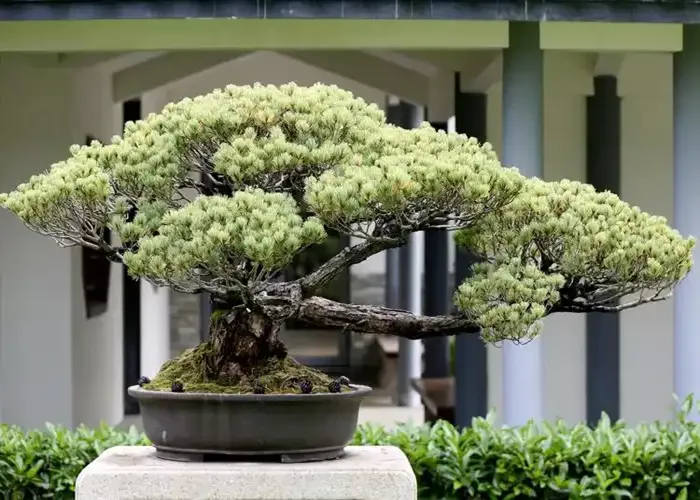Bonsai, an ancient art form that originated in Asia, has captivated gardening enthusiasts worldwide. It combines horticultural mastery with artistic expression, creating miniature trees that reflect nature’s grandeur. For those delving into the world of bonsai, literature becomes an indispensable tool. Bonsai books serve as guides, inspiration, and repositories of techniques honed over centuries. But how significant is the bonsai book in shaping this niche? Let’s explore the depth of its importance, the best publications in the field, and the evolving trends in bonsai literature.
The Role of Bonsai Books in Gardening
1. Gateway to Knowledge
Bonsai is a complex practice that blends art and science. For beginners, bonsai books provide foundational knowledge, such as selecting suitable tree species, understanding soil requirements, and mastering watering techniques. Advanced practitioners rely on these books to refine their skills, explore new styles, and troubleshoot problems.
2. Preservation of Cultural Heritage
The origins of bonsai can be traced back over a thousand years to China, where it was known as “penjing.” It later spread to Japan, where it evolved into the modern bonsai art form. Books on bonsai play a vital role in preserving this rich history. They document traditional practices, philosophies, and cultural significance, ensuring that the legacy of bonsai is not lost to time.
3. Inspiration for Creativity
Bonsai books are not merely instructional; they also inspire. Stunning photographs and case studies of masterfully crafted bonsai trees ignite the imagination. They encourage readers to experiment with different styles, such as formal upright, cascade, or windswept designs, and push the boundaries of what is possible in this miniature art form.
Exploring The Canon Of Bonsai Literature
1. Timeless Classics
Some bonsai books have achieved iconic status in the gardening world. Titles like “Bonsai Techniques” by John Naka are revered for their depth and clarity. These works, often penned by masters, provide a deep dive into advanced techniques such as grafting, air-layering, and creating deadwood effects.
Key Features of Timeless Classics:
- Comprehensive guides for all skill levels.
- Detailed illustrations and step-by-step instructions.
- Philosophical insights into the art of bonsai.
2. Modern Interpretations
Contemporary bonsai books cater to a diverse audience, including urban gardeners, casual enthusiasts, and eco-conscious individuals. These publications emphasize sustainability, the use of native species, and adapting bonsai techniques to local climates.
Trends in Modern Bonsai Books:
- Focus on eco-friendly practices, such as using organic fertilizers.
- Inclusion of digital resources like QR codes linking to video tutorials.
- Simplified language for accessibility.
3. Regional Specializations
Bonsai styles and practices vary by region, reflecting the local flora and artistic traditions. For example, books on Chinese penjing focus on creating elaborate landscapes, while Japanese bonsai books highlight minimalism and balance. Regional bonsai books offer unique perspectives that enrich a gardener’s understanding of this global art.
Innovations in Bonsai Publishing
1. Digital Revolution
The digital age has transformed how bonsai enthusiasts access information. E-books, apps, and online forums complement traditional print books, offering interactive content and real-time support. Some bonsai books now include augmented reality (AR) features, allowing readers to visualize pruning techniques or tree growth patterns.
2. Visual Storytelling
Modern bonsai books place greater emphasis on visual storytelling. High-resolution images and detailed diagrams make complex concepts more digestible. Coffee-table bonsai books, filled with artistic photography, double as decorative pieces that celebrate the beauty of bonsai.
3. Community Engagement
Crowdsourced books and collaborative publications are emerging trends in the bonsai community. These books compile contributions from bonsai artists worldwide, showcasing diverse styles and fostering a sense of global camaraderie.
Evaluating The Best Bonsai Books For Beginners
1. “Bonsai: A Beginner’s Guide to Cultivation and Care” by Peter Chan
This book is perfect for those starting their bonsai journey. It simplifies the art, breaking down essential techniques into manageable steps.
Highlights:
- Clear guidance on selecting beginner-friendly species.
- Practical tips for watering, pruning, and repotting.
- Troubleshooting common issues, like pest infestations.
2. “The Complete Practical Encyclopedia of Bonsai” by Ken Norman
A comprehensive guide, this book caters to beginners and intermediates alike. It includes over 800 photographs that illustrate various techniques and styles.
Highlights:
- Step-by-step projects to create specific bonsai styles.
- A detailed glossary of terms for easy reference.
- Focus on traditional and modern practices.
Challenges in Bonsai Literature
1. Lack of Standardization
One challenge in bonsai books is the lack of standardization in terminology and techniques. Different authors may use varying terms for similar concepts, which can confuse readers.
2. Limited Representation
While Japanese and Chinese bonsai dominate the literature, other regions, such as Indonesia and South Africa, have unique bonsai traditions that deserve more attention.
3. Accessibility Issues
High-quality bonsai books can be expensive, and rare editions may be out of reach for many enthusiasts. Additionally, some classic texts are only available in Japanese or Chinese, limiting their audience.
Conclusion
Bonsai books are monumental in shaping the practice and appreciation of this intricate art form. From preserving cultural heritage to inspiring creativity and fostering global connections, they serve as indispensable guides for beginners and seasoned practitioners alike.
While timeless classics lay the groundwork, modern innovations in publishing are making bonsai knowledge more accessible and engaging. Challenges such as limited representation and accessibility must be addressed to ensure that bonsai literature continues to flourish.
As the field evolves, bonsai books will remain a cornerstone, blending tradition with innovation to inspire future generations of gardeners. Whether in print or digital form, they encapsulate the essence of bonsai: a harmonious blend of patience, artistry, and nature.


